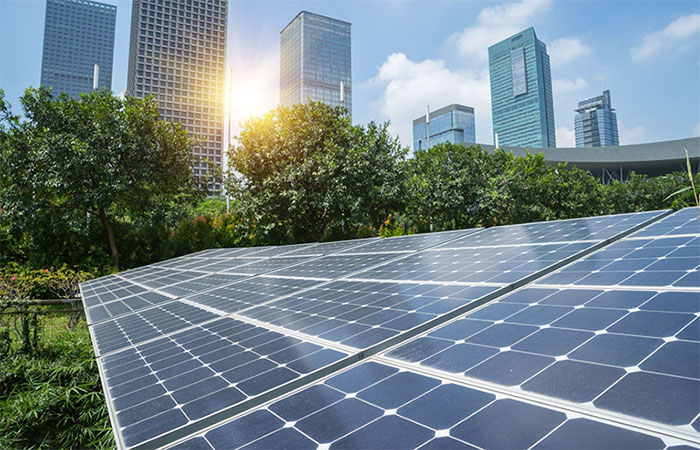What is Sustainable Facility Management?

Sustainability holds immense importance for businesses across industries and of varying sizes. Within the Facility Management (FM) sector, the significance of sustainable practices is steadily rising as property management firms endeavor to curtail their ecological footprint while also achieving cost savings. Consequently, what constitutes sustainable facility management and the advantages it presents are subjects we'll delve into within this blog post.
Sustainable facility management (SFM) entails the adept administration of buildings and operations through a sustainable lens. The primary objectives of SFM encompass diminishing an organization's operational environmental impact, realizing monetary savings, and enhancing the well-being of employees, clients, and other stakeholders.
To achieve these ambitions, practitioners of sustainable FM adopt an array of sustainable techniques, such as optimizing energy usage, conserving water resources, minimizing waste production, and prioritizing sustainable procurement practices. These approaches not only assist property management entities in reducing costs and environmental consequences but also foster the health and comfort of building occupants and personnel.
The realm of sustainable FM transcends mere financial savings and environmental mitigation. It is fundamentally about cultivating a more salubrious and productive workspace for employees, thereby enhancing customer experiences. In essence, sustainable FM bolsters business operations.
Numerous avenues exist for incorporating sustainable FM within workplaces and organizations. One strategy is to commence with incremental modifications to day-to-day operations and processes. For instance, transitioning to energy-efficient illumination, installing water-conserving fixtures, or instituting a recycling initiative are actionable steps. Alternatively, seeking green building certifications such as LEED or BREEAM constitutes another route. Green buildings adhere to sustainable principles during design and construction, furnishing a gamut of benefits like improved indoor air quality, augmented natural lighting, and enhanced thermal comfort.
Undoubtedly, sustainable FM encounters challenges. Foremost among these challenges is the need to reshape perspectives about and appreciation for sustainability. Perceptions that sustainable practices are expensive or cumbersome persist, although the reality diverges significantly. Such practices not only generate cost savings for businesses but also elevate workforce efficiency and heighten customer satisfaction. Confronting this challenge mandates an educational endeavor aimed at enlightening employees, clients, and stakeholders about the merits of sustainable FM.
Another hurdle in the sustainable FM domain is the presence of property management enterprises that have yet to embrace sustainable practices, especially pronounced in developing nations with laxer environmental regulations. Expanding the reach of sustainable FM necessitates sustained efforts to underscore the importance of sustainability within facility management.
Additionally, technology's integration into sustainable FM is spawning advancements in energy efficiency and environmental conservation. Data analytics, for instance, empower property managers to identify avenues for optimizing energy utilization. Simultaneously, eco-friendly building materials like bamboo and recycled plastics are garnering increased attention, given the growing consciousness of traditional materials' ecological impact.
Evidently, sustainable facility management stands as a swiftly expanding domain, characterized by exciting trends. For facility managers, staying attuned to these trends and challenges is imperative to successfully infuse sustainable practices into their operational frameworks.
The Difference Between Sustainable and Renewable Energy

What is sustainable energy?
Sustainable energy includes any energy source that cannot be depleted and can remain viable forever. It does not need to be renewed or replenished; sustainable energy meets our demand for energy without any risk of going bad or running out. This is why sustainable energy is the answer to our energy needs.
Moreover, sustainable energy has a negligible impact on the environment, rarely contributing to climate change, and involves minimal financial burdens. While there are expenses linked to developing and establishing methods for harnessing sustainable energy, the energy sources per se usually come at no cost. Instances of sustainable energy sources encompass wind, solar, and water (hydropower), all of which are essentially limitless and accessible to a vast majority. Geothermal energy, which harnesses the Earth's internal heat sources like geysers, also qualifies as a viable sustainable energy option.
What is the difference between sustainable and renewable energy?
People often use the terms “sustainable” and “renewable” interchangeably. However, there is a difference between the two: the possibility of replenishment.
As mentioned earlier, sustainable energy possesses a theoretical inexhaustibility. This stems from the fact that sustainable energy sources do not necessitate replenishment. Take the sun and wind, for instance; they require no creation or replacement efforts.
Conversely, renewable energy can theoretically be depleted. It relies on earth-derived resources that have the ability to naturally regenerate, like crops and biomatter. For instance, bioenergy utilizes organic materials such as agricultural byproducts (e.g. straw and manure) for energy generation. Ethanol, derived from sugarcane and corn, serves as another example of bioenergy. Given that these crops can be cultivated and harvested to continually produce energy, they fall under the category of renewable energy.
What are the benefits of sustainable energy?
There is a broad range of benefits to transitioning to sustainable energy. Below we’ll list the top ways sustainable energy can positively impact our communities and planet:
Improve Public Health
The burning of fossil fuels in coal and natural gas plants leads to serious public health issues like neurological damage, cancer, heart attacks, and premature death. This pollution negatively impacts communities and environments. Switching to sustainable energy sources can eliminate these risks and maintain local water resources. Coal mining, natural gas drilling, and thermal power plants compete with agriculture and community water needs.
Creates Local Jobs
Sustainable energy can also help fuel your local communities. Since most facilities and sustainable energy infrastructure must be built locally or in the same county, making the switch helps create jobs and improve the economy. Instead of spending more money importing energy from fossil fuel companies, that money is spent on materials and workmanship to maintain sustainable energy facilities.
Decreases Your Carbon Footprint
Sustainable energy sources like wind and solar can reduce carbon emissions and contribute to global warming by reducing the need for fossil fuels. Switching to these energy sources can help reduce environmental impact and eliminate dependence on fossil fuels, making it a more sustainable choice for individuals and families.
Long-term Cost is More Affordable
Sustainable energy can significantly reduce electricity and energy costs in homes and businesses, making it more cost-effective than traditional energy sources like power plants. Although initial installation costs may seem high, the long-term investment pays off in just a few years. Sustainable energy costs decrease annually, and tax reductions may be available for choosing sustainable energy. Switching to a solar panel system could result in exponential savings.
Energy Security
Sustainable energy is by definition the most reliable form of energy. It will never deplete and can remove our reliance on imported fossil fuels, which are growing more expensive and less accessible. Sustainable energy also helps to conserve the planet’s natural resources and reduce the pollution associated with unsustainable energy.
Why is sustainable energy important for our future?
The current energy crisis is significantly impacting the planet due to human activities, causing a rapid 1.5-degree increase in global temperatures since the industrial revolution, primarily driven by burning fossil fuels. This has led to excessive carbon dioxide (CO2) emissions and subsequent global warming. Carbon imbalance in the atmosphere is resulting in dire consequences like glacier melt, rising sea levels, and extreme weather events. Finite energy sources are also causing pollution of air, water, and soil, harming both the environment and human health. Despite irreversible damage, hope remains in adopting sustainable energy sources to mitigate climate change effects and safeguard future generations. The key lies in reducing carbon emissions and embracing clean energy solutions to effectively combat the crisis.

